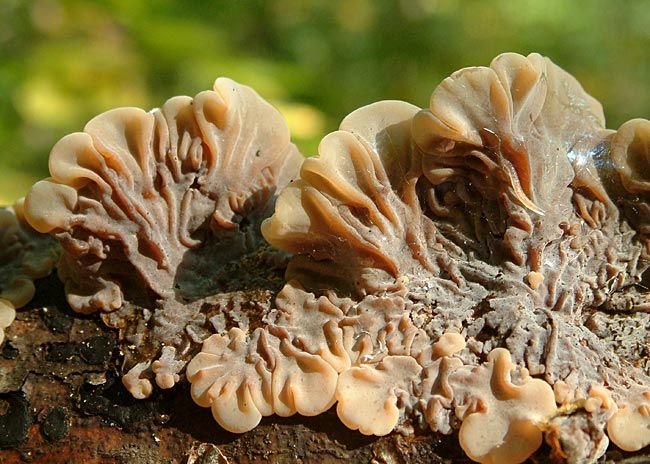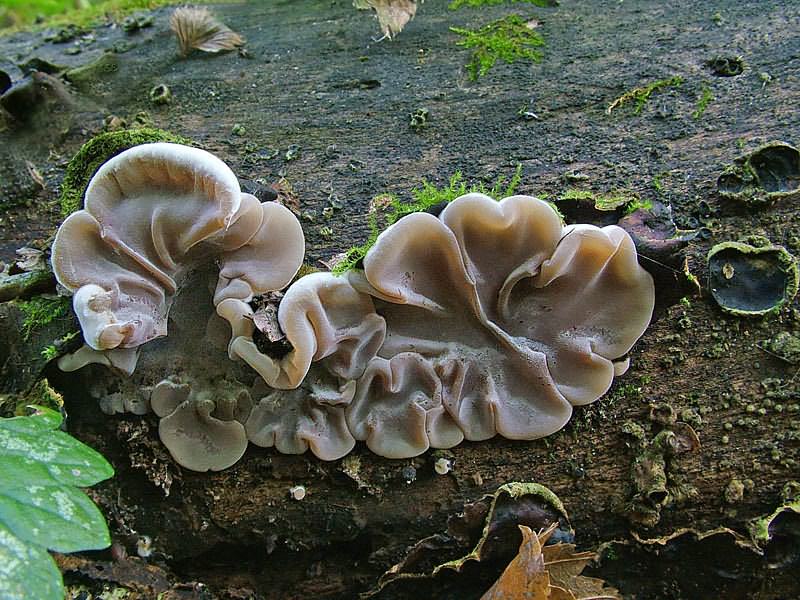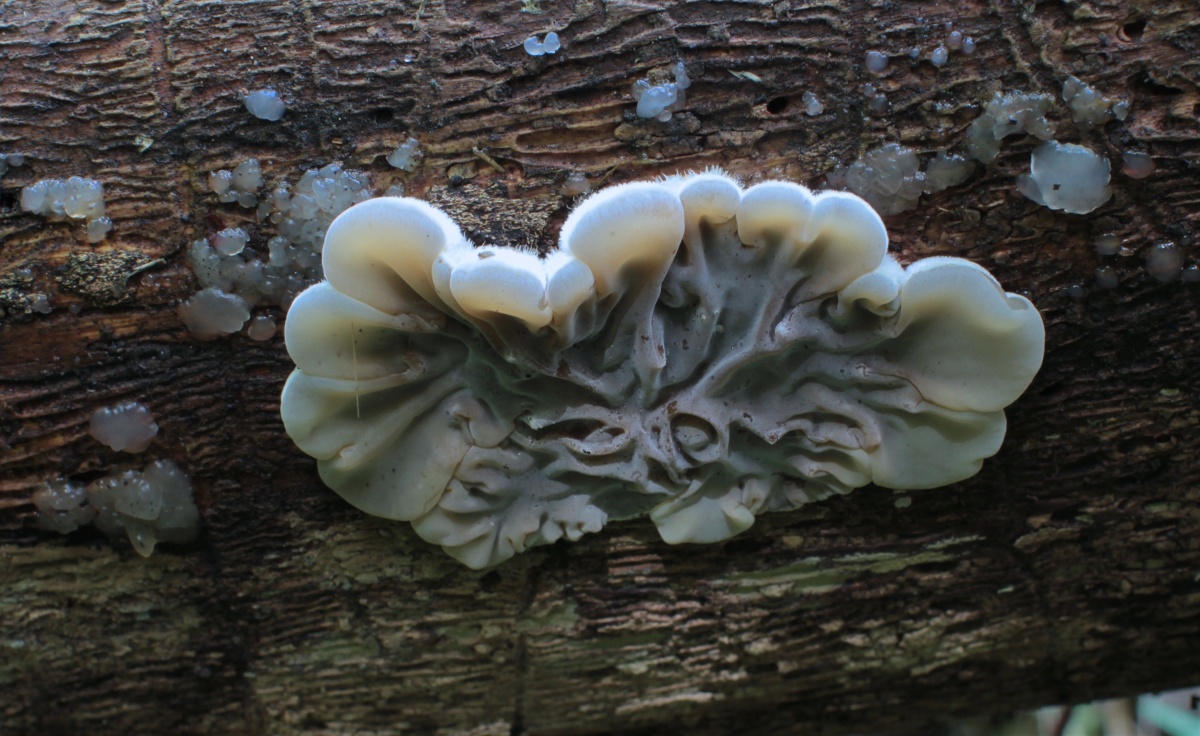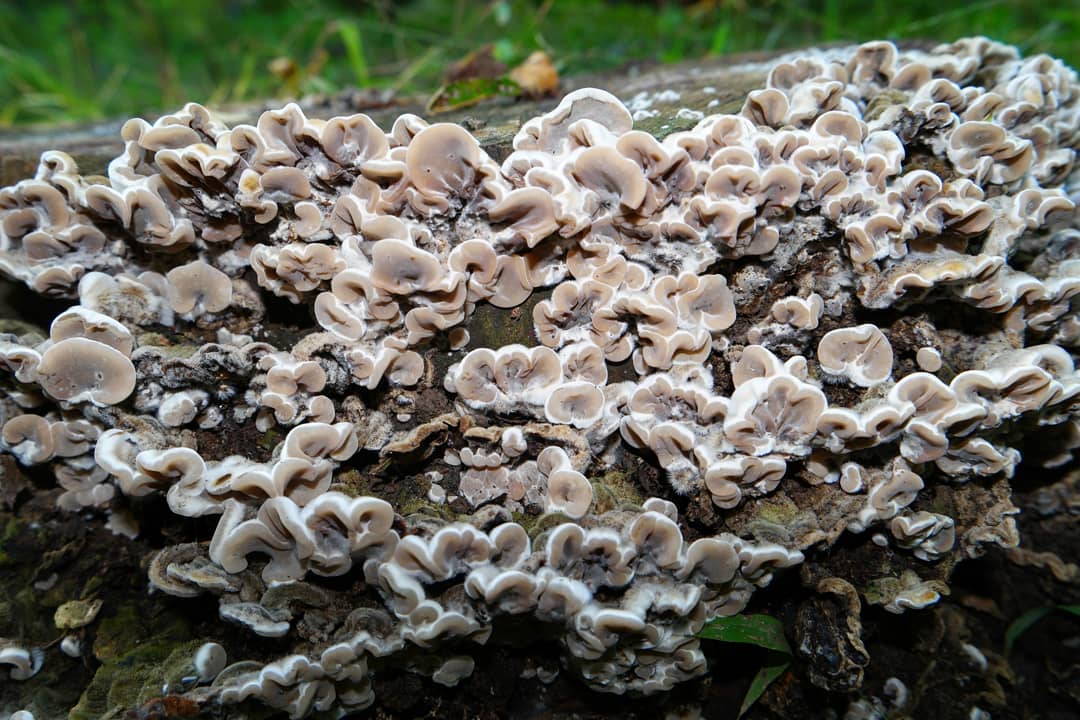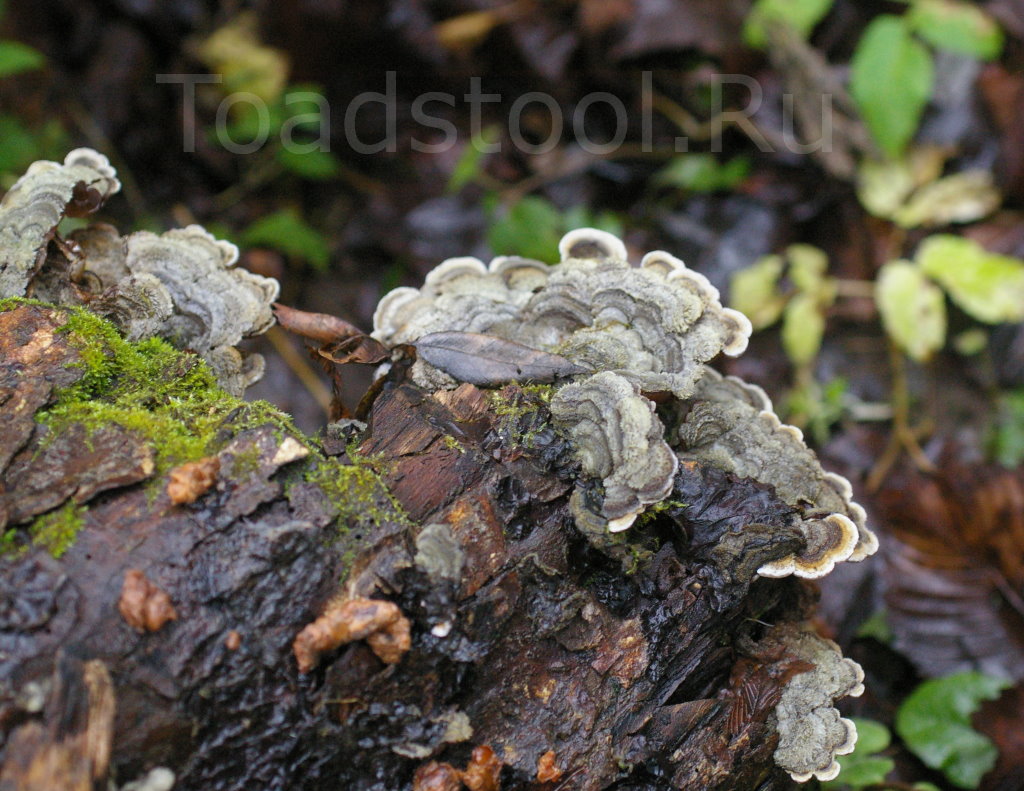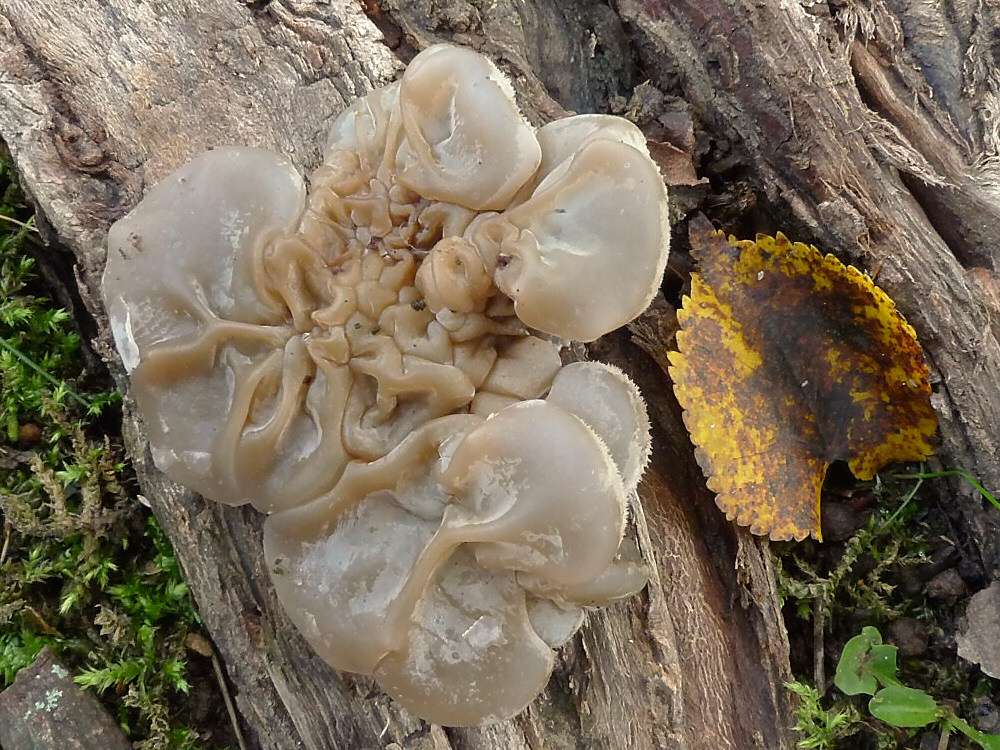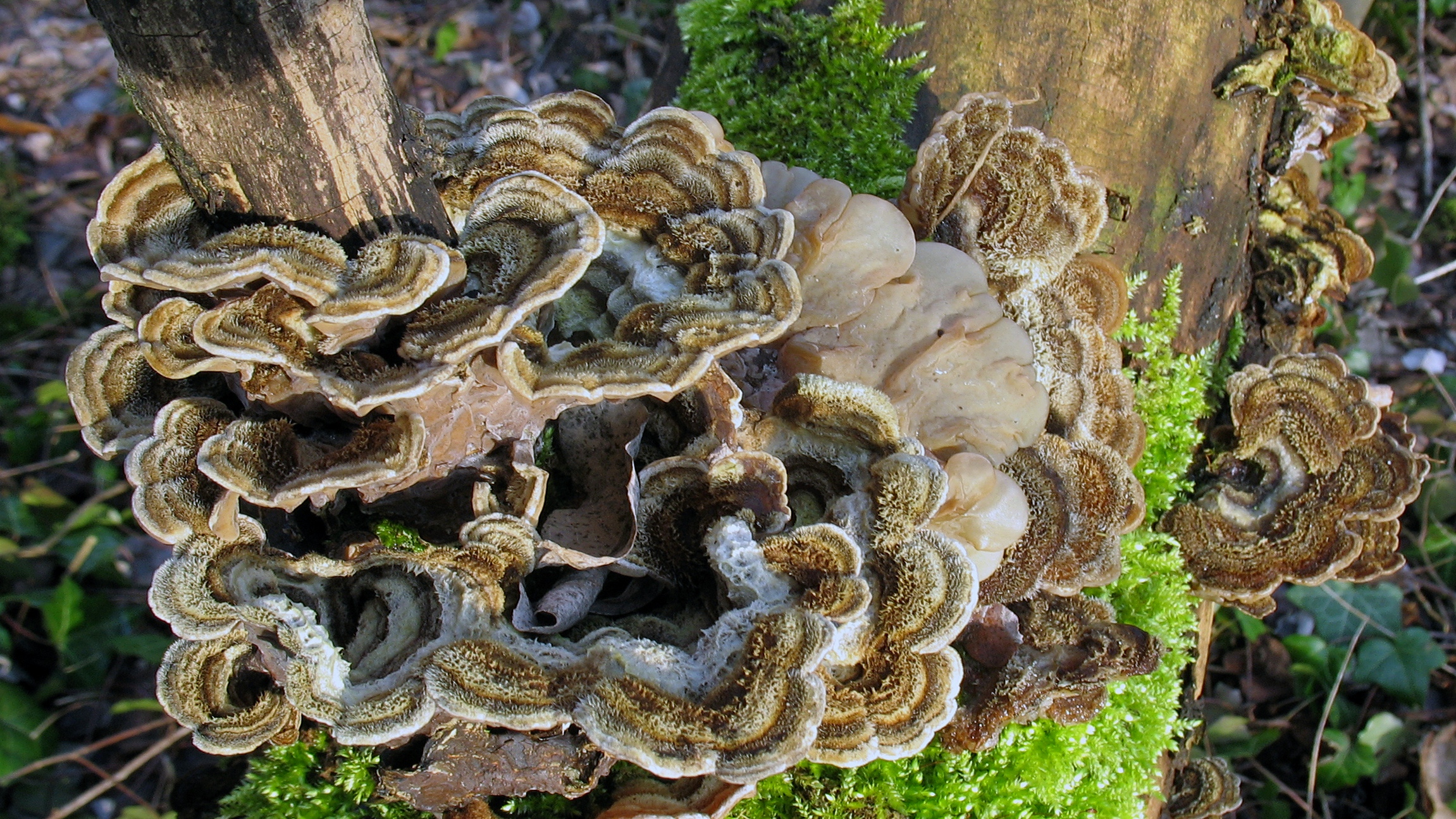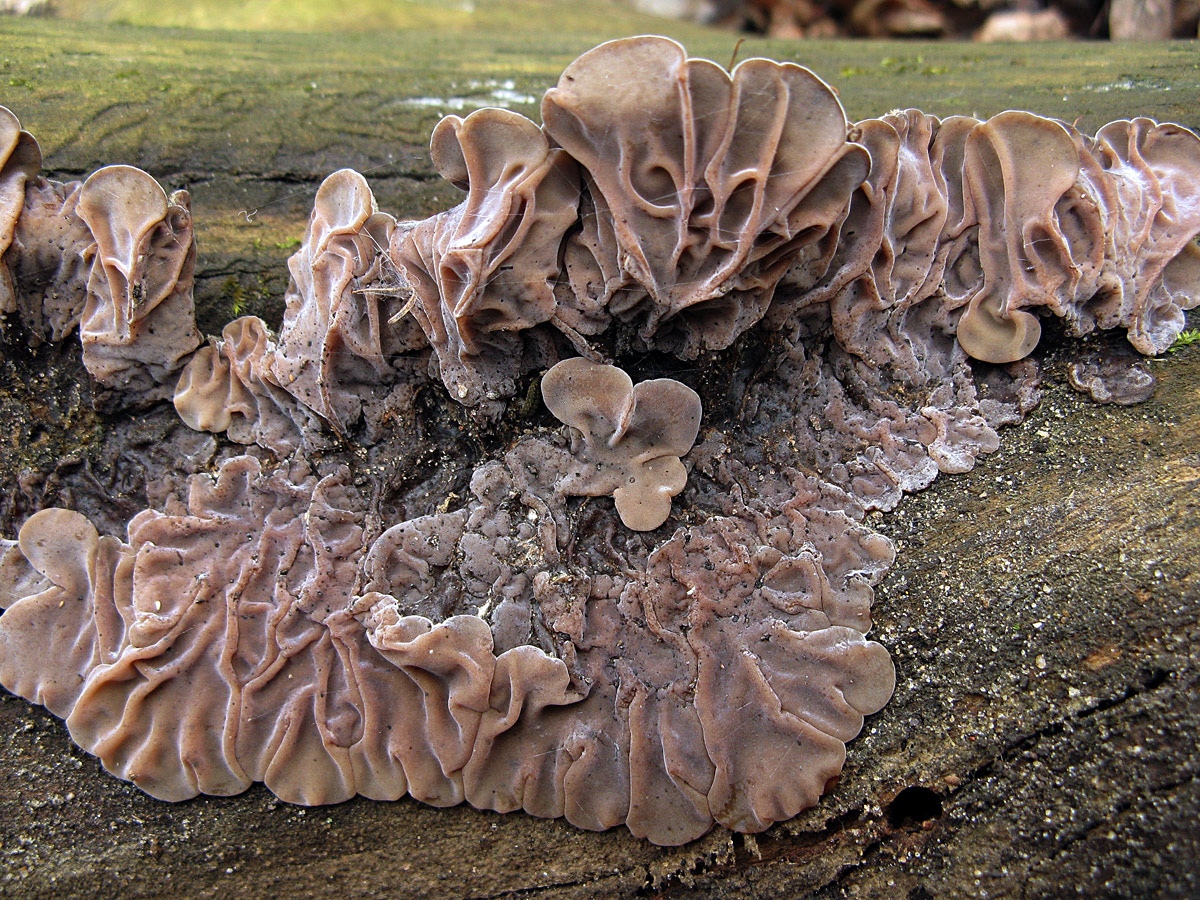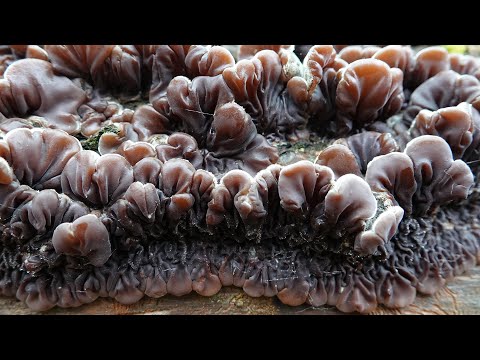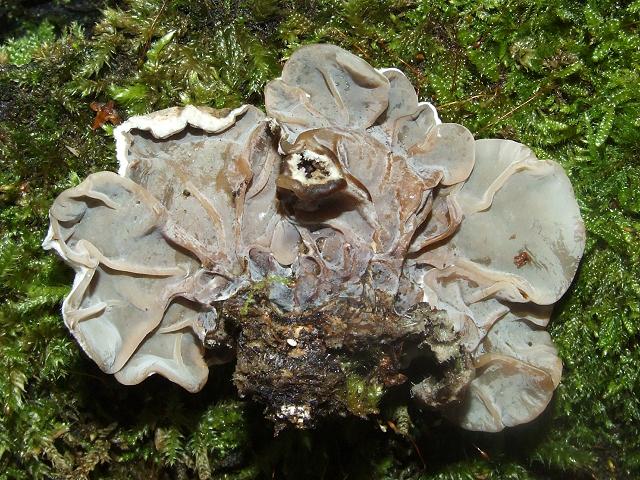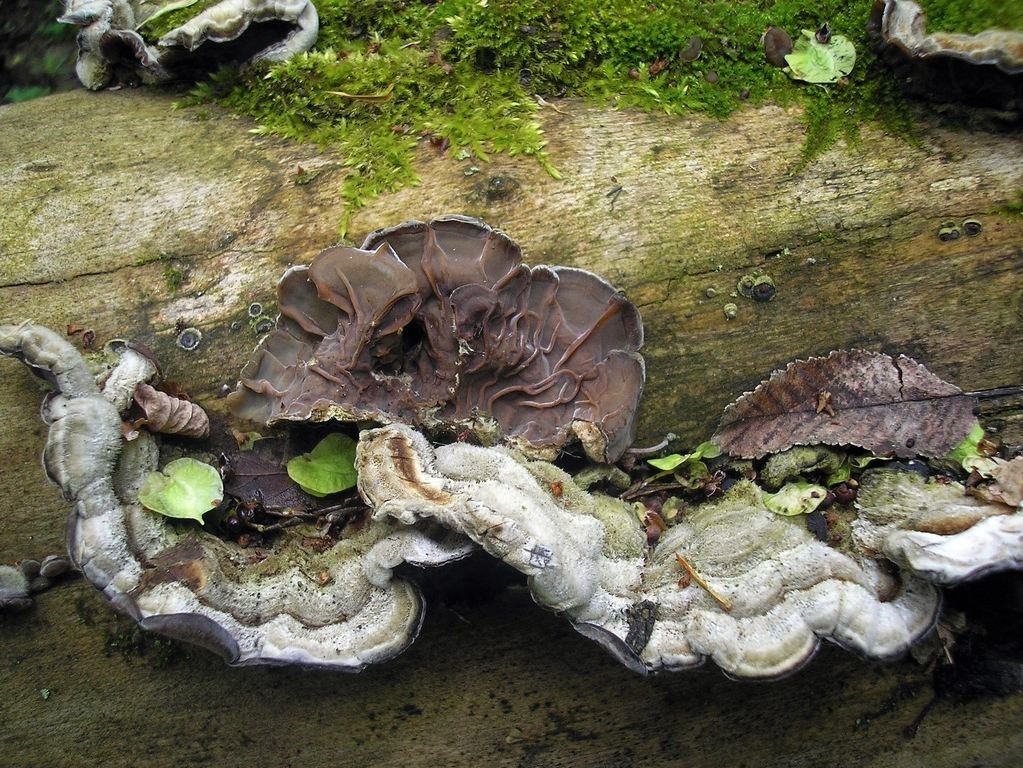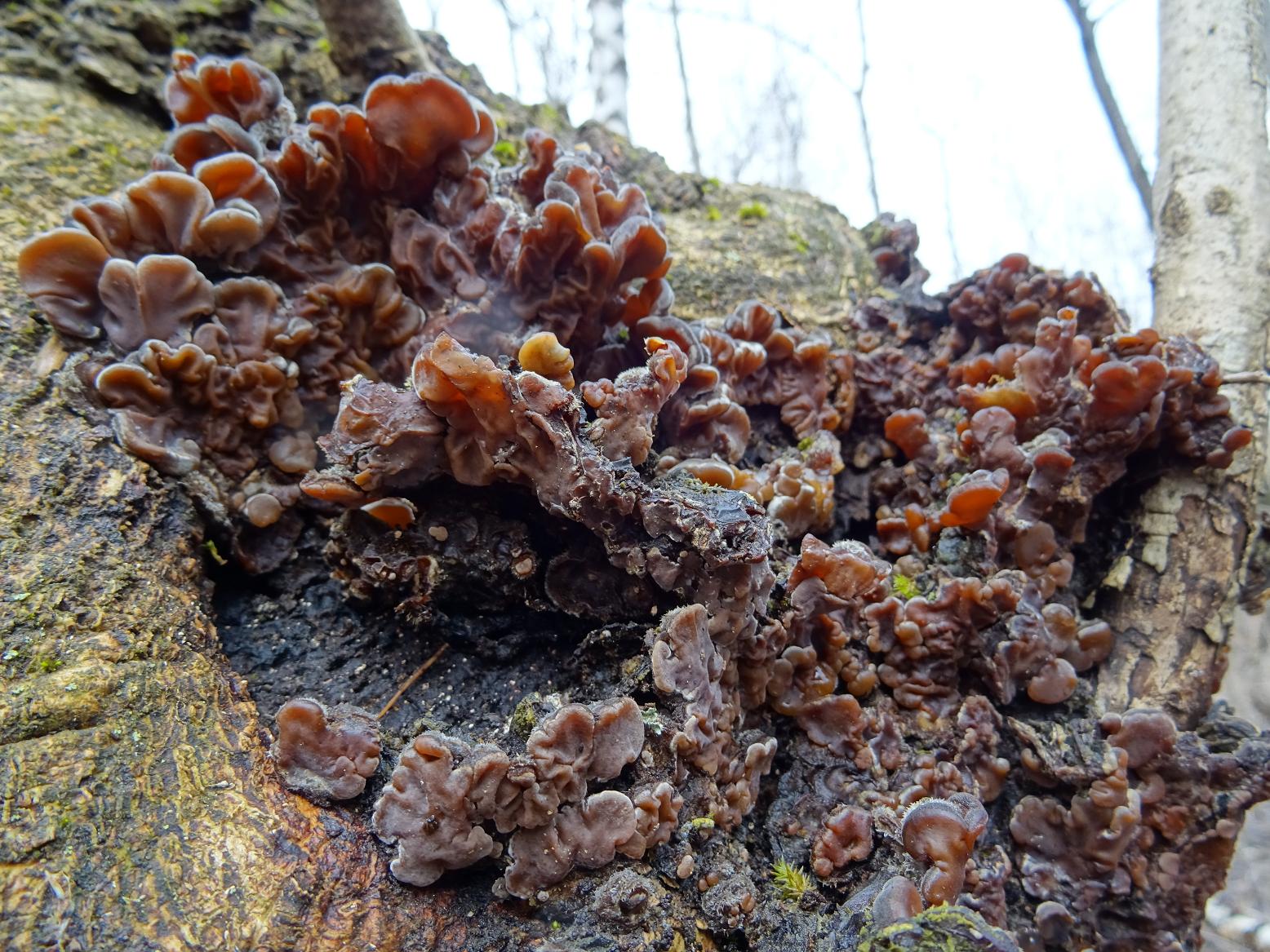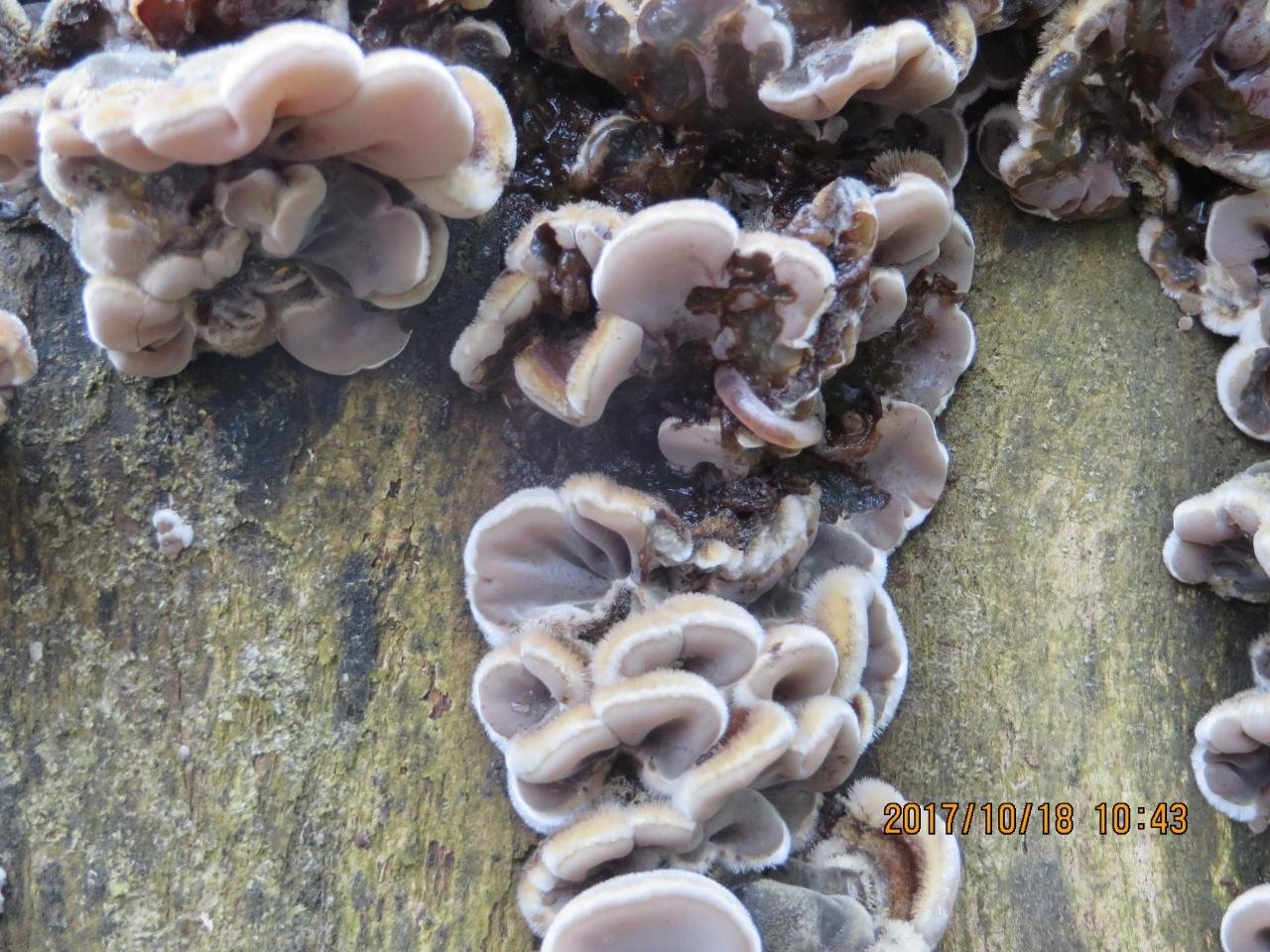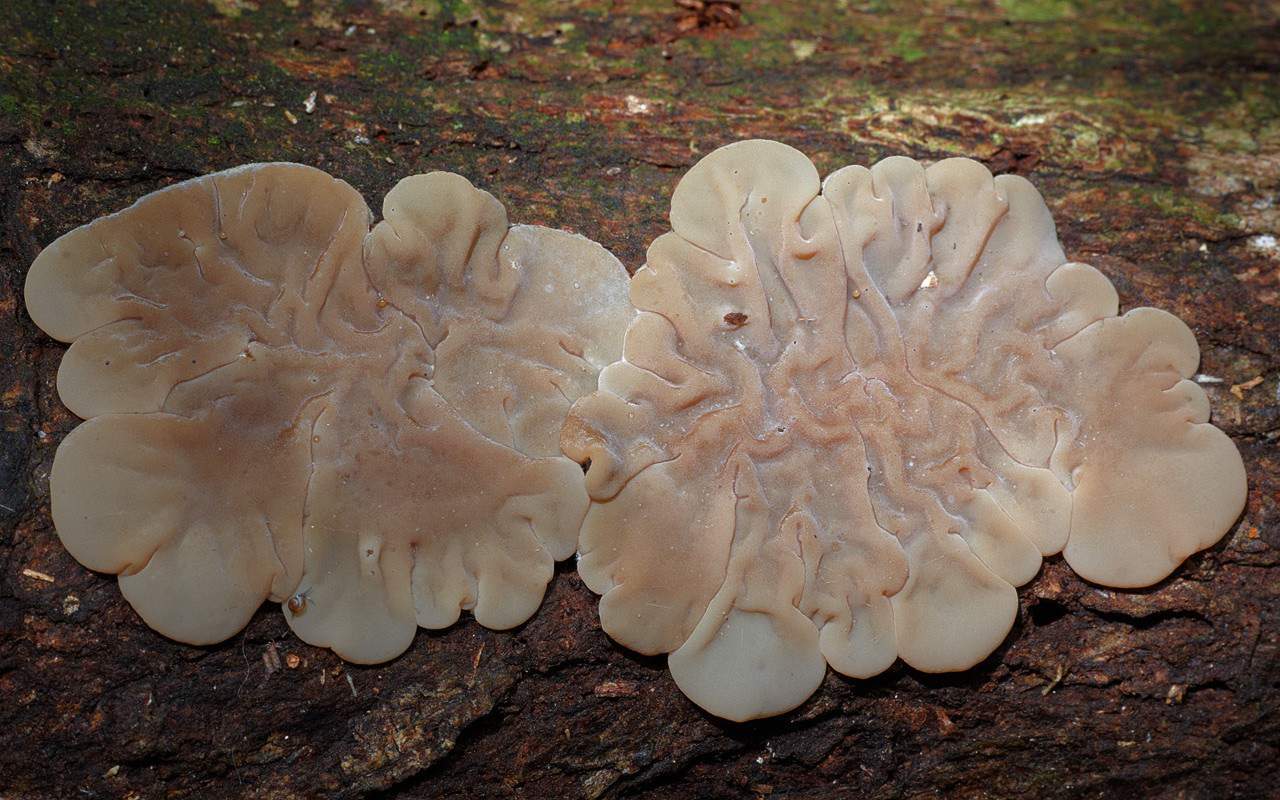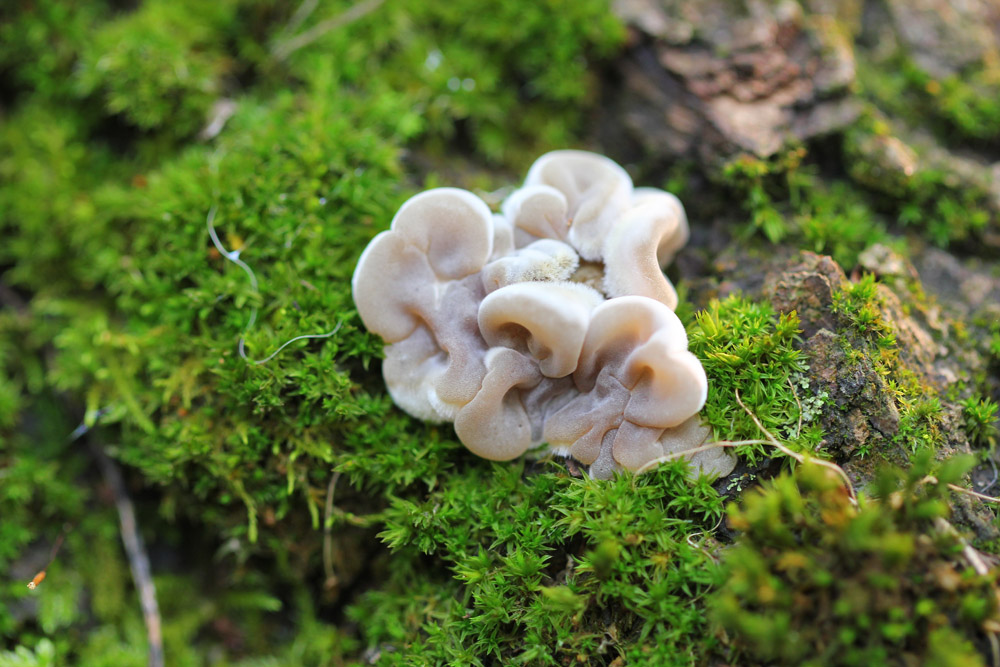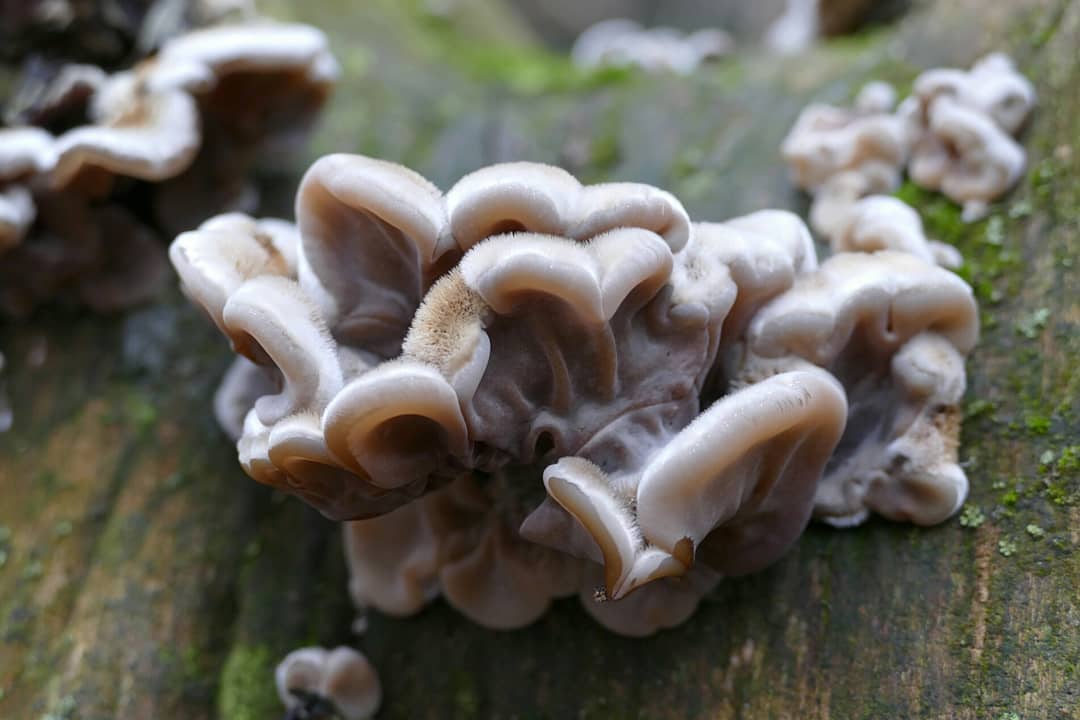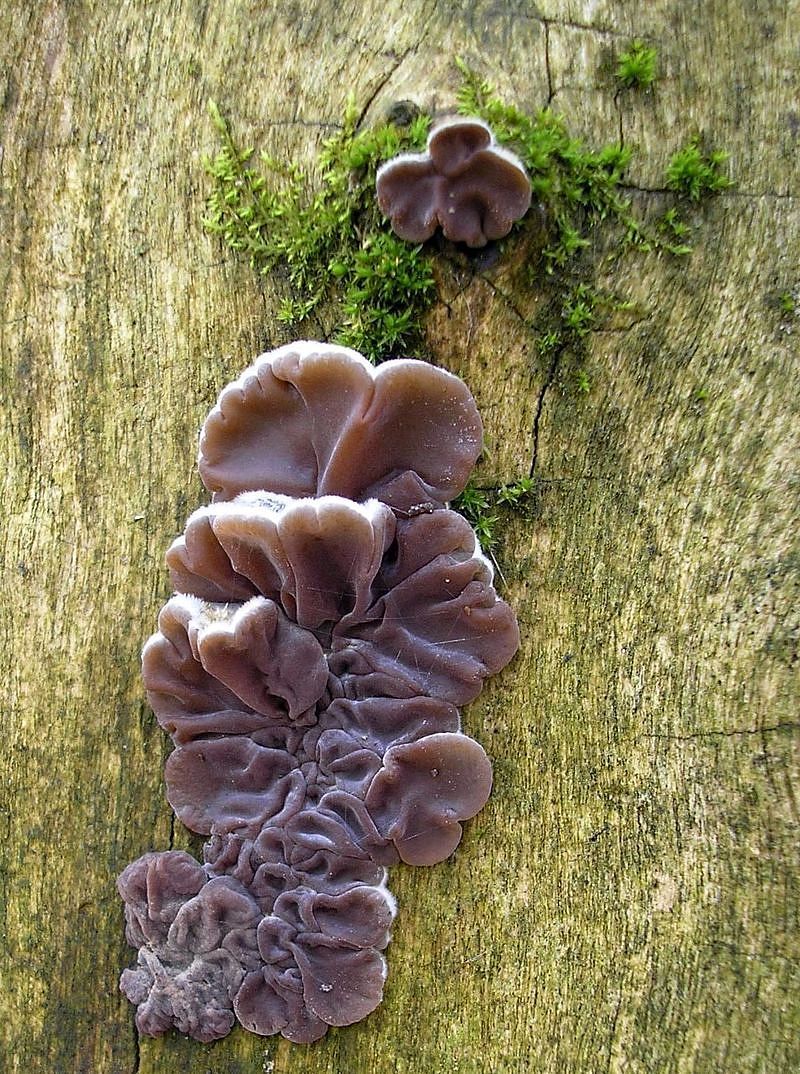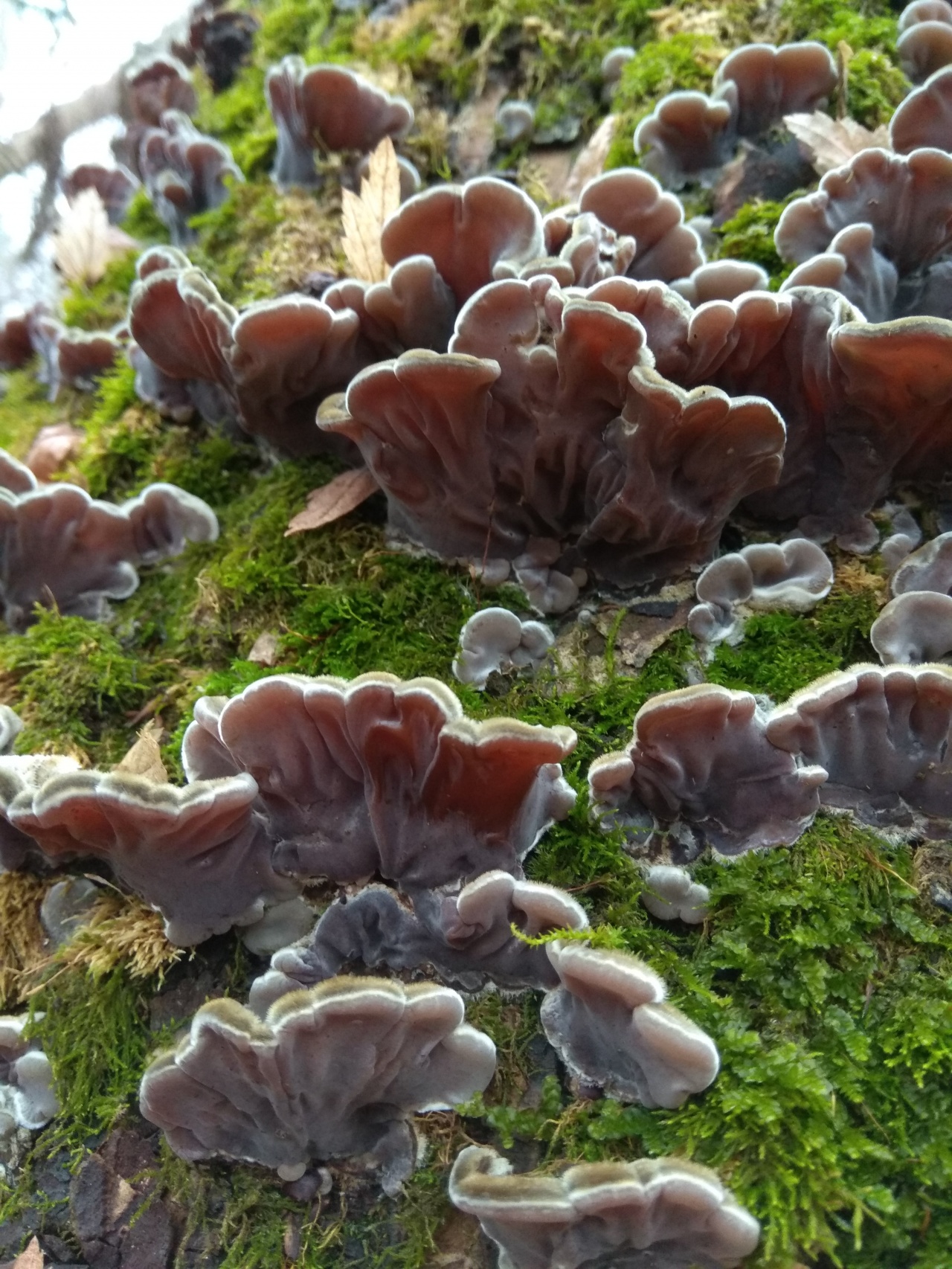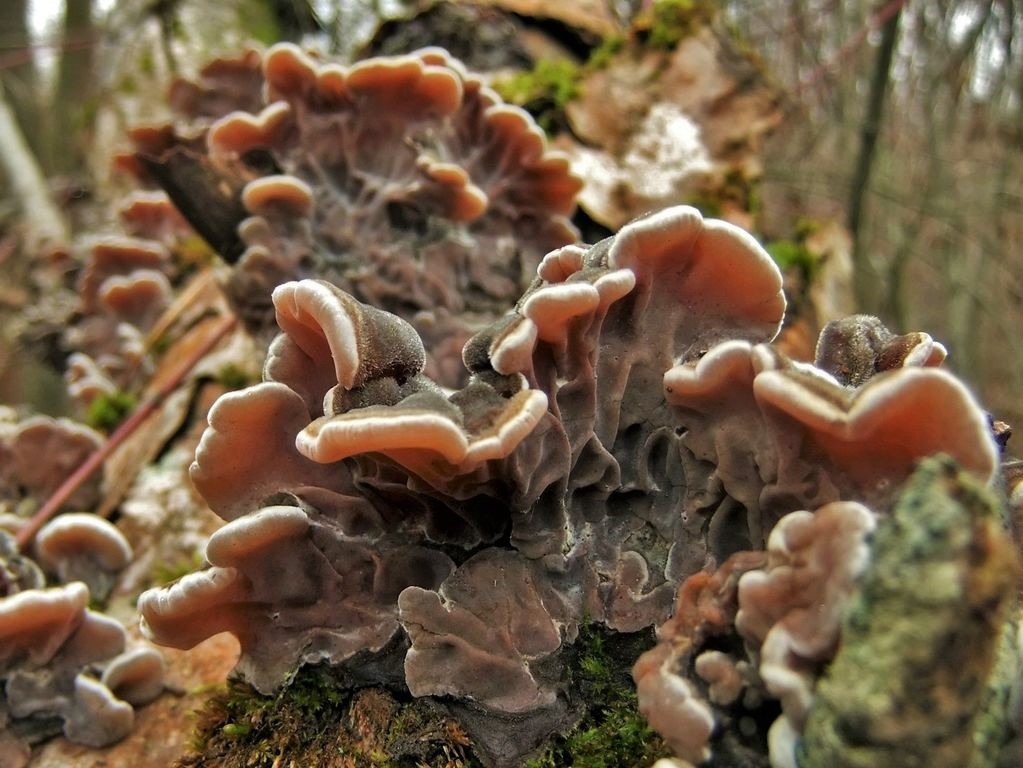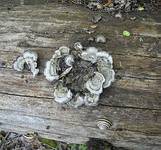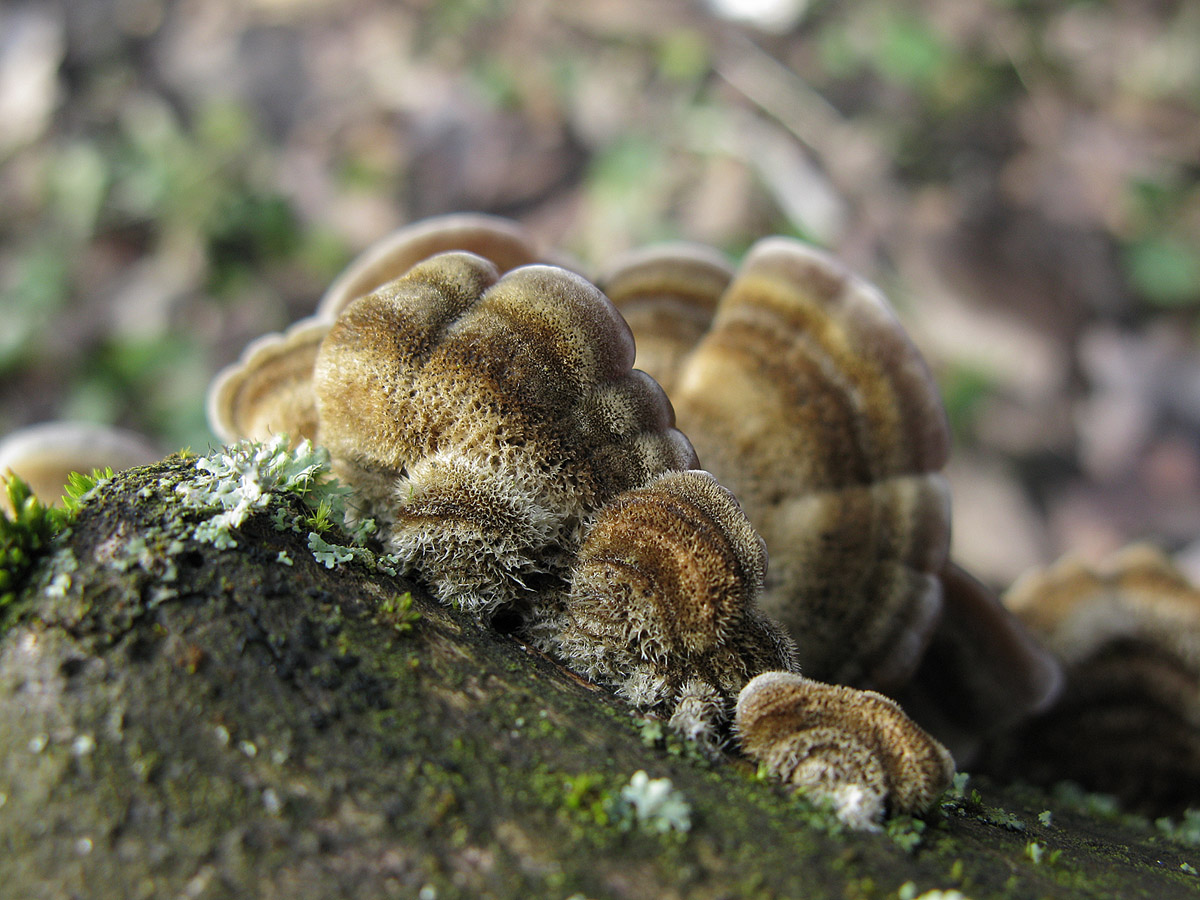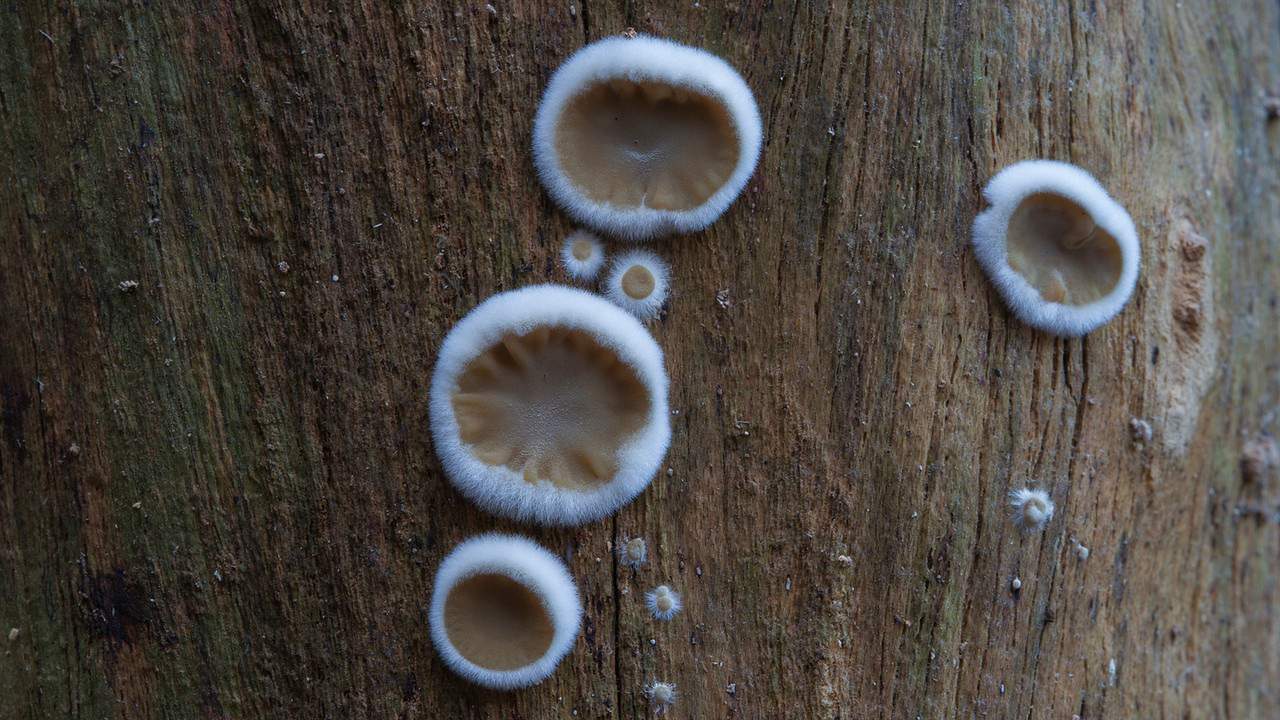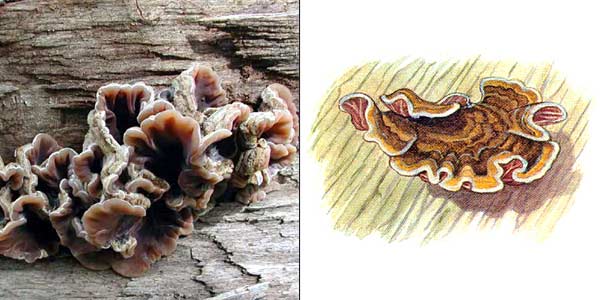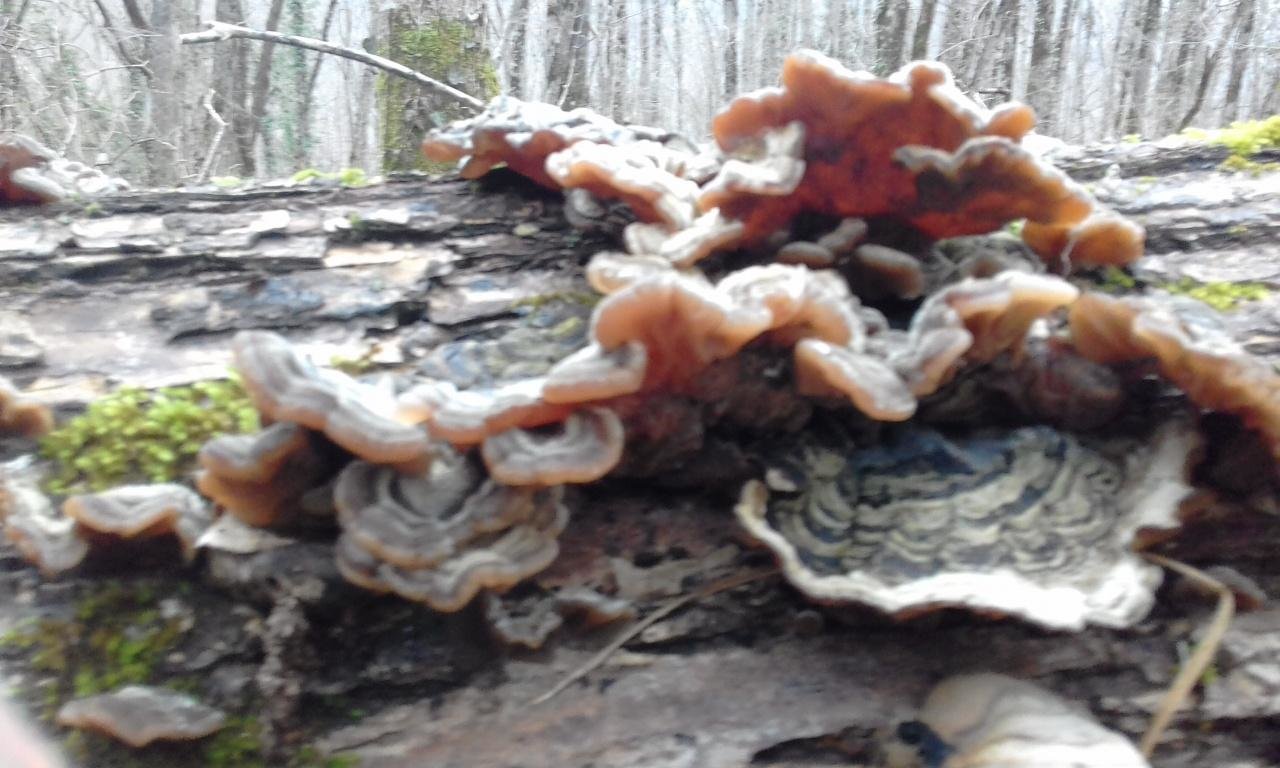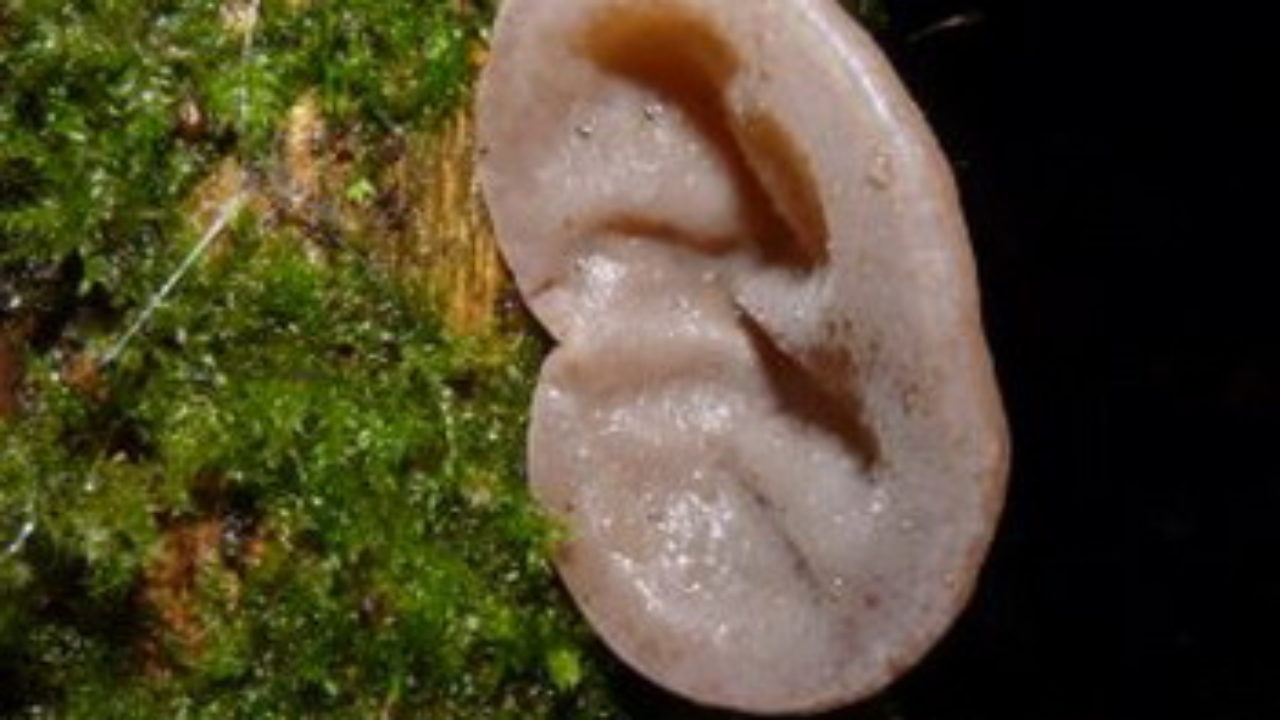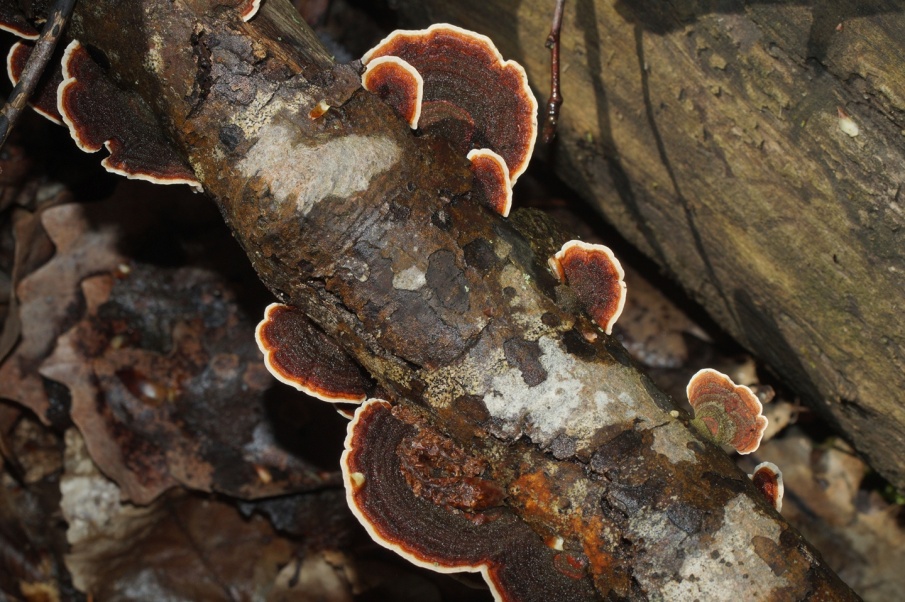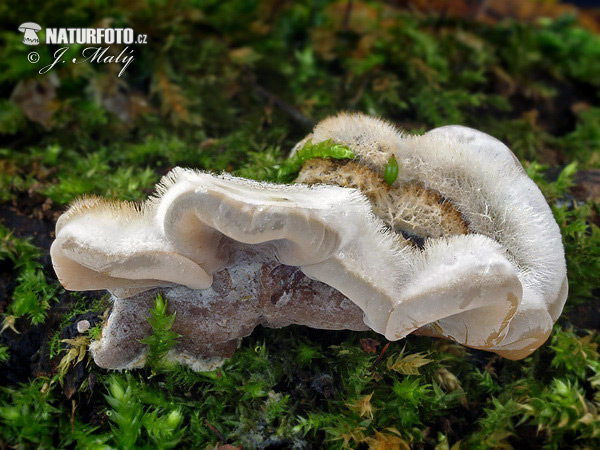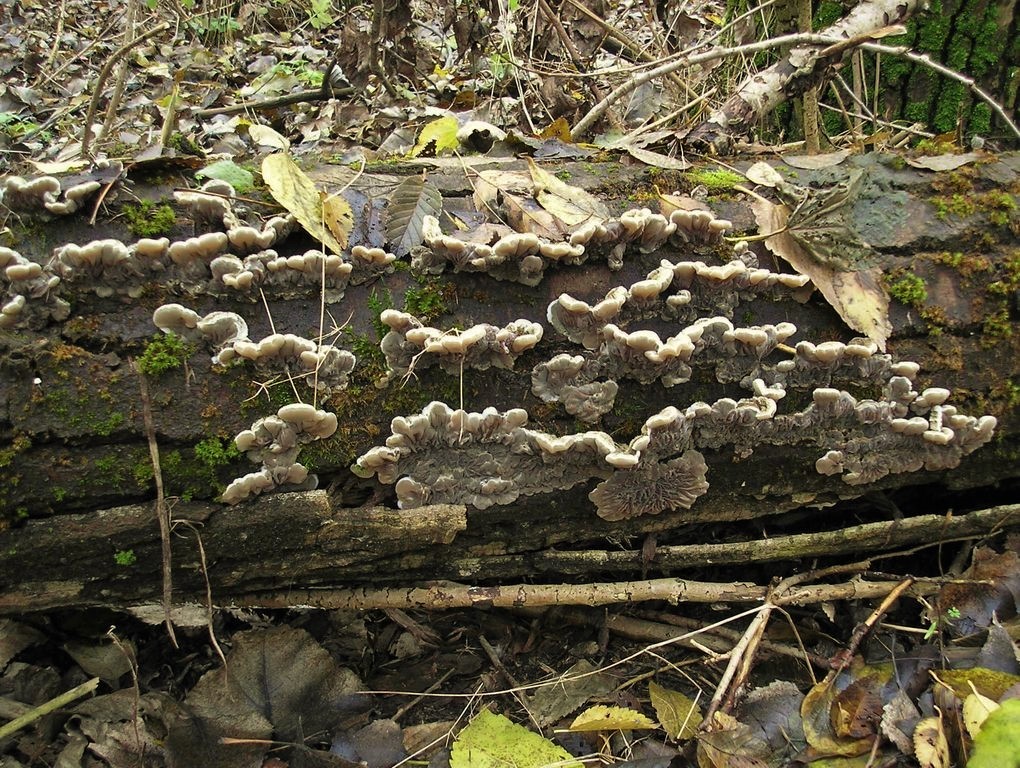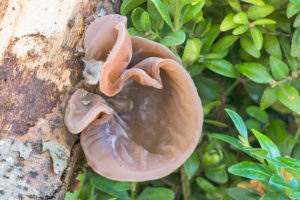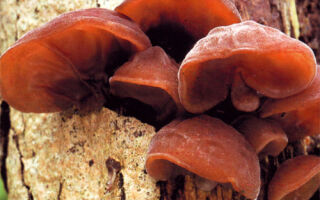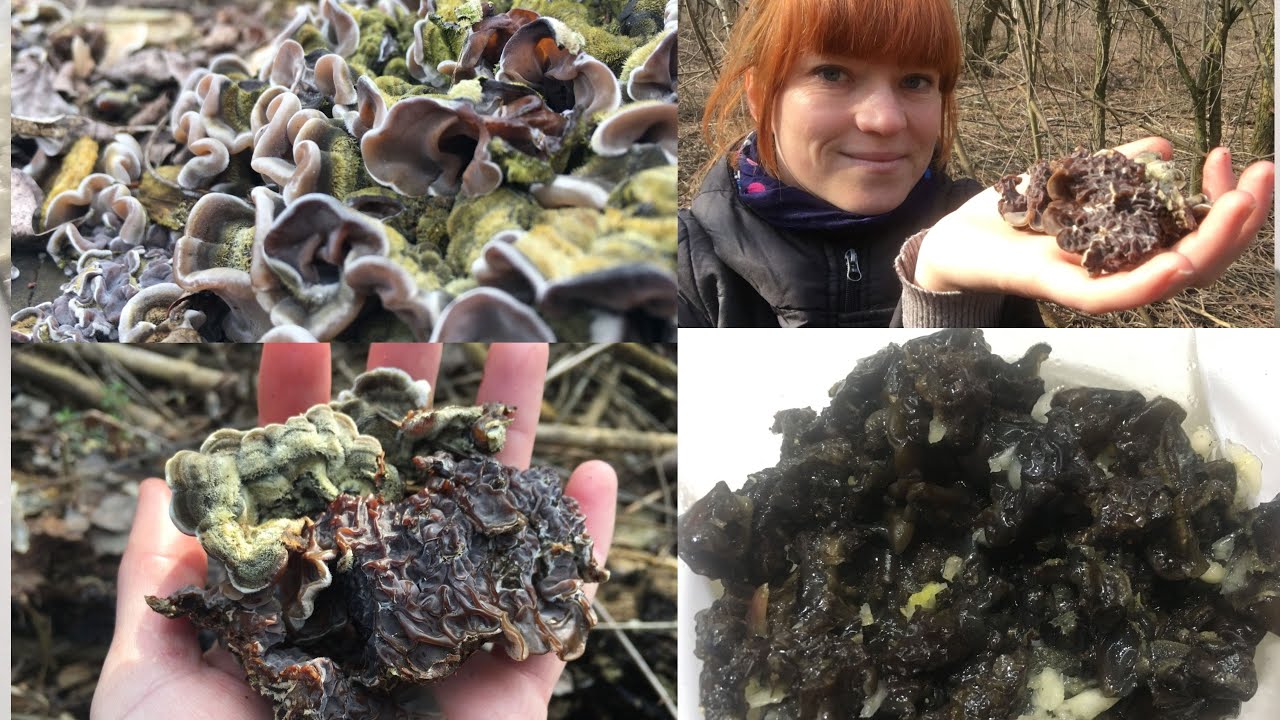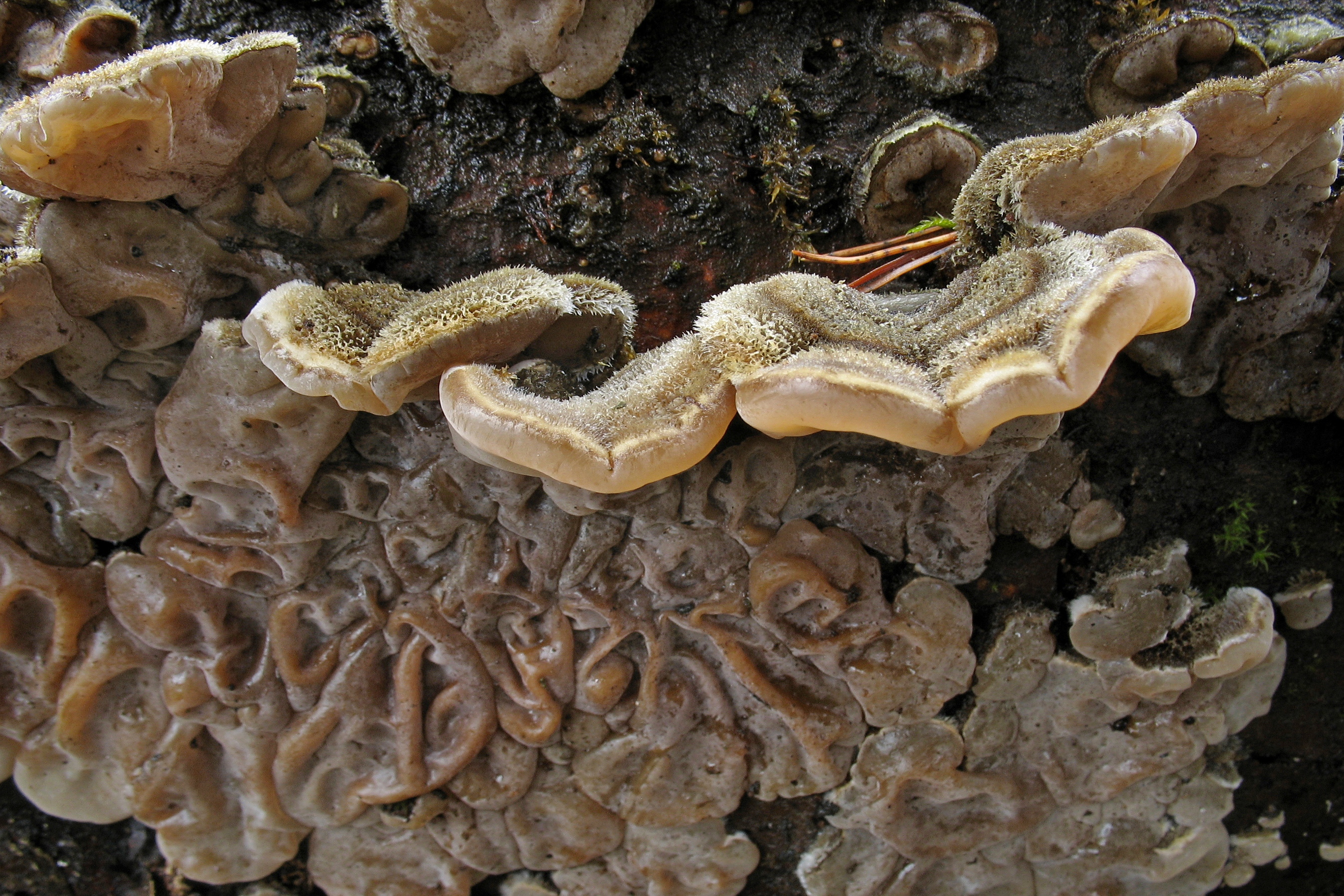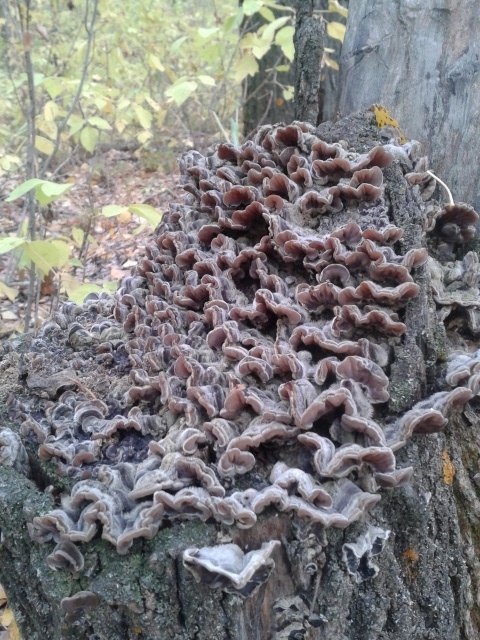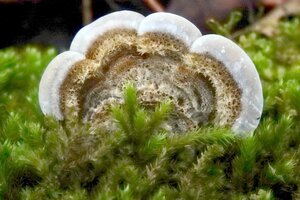Cooking applications
This mushroom has great nutritional value. It is rich in carbohydrates and protein, vitamins, especially group B, micro and macro elements. This plant contains a lot of potassium, calcium, magnesium, silicon and other minerals. It is massively used in oriental cuisine. Allowed to use fresh and dried. Most often it is eaten boiled, but sometimes young mushrooms are eaten raw. The "black ear" is usually sold in dried form. Before using it, you need to soak it and then it will take its original form. There are many recipes in Chinese cuisine using this mushroom.
Soup with Auricularia mushrooms and seafood.
The amount of ingredients is calculated for 2.5 liters of broth. Soak a handful of dry mushrooms in warm water. At this time, we are preparing other products. Cut the onion head into thin half rings, one bell pepper and 5-6 champignons into strips, 150 grams of fresh salmon or salmon - cubes. Lightly sauté the onion in vegetable oil, add pepper and mushrooms to it. Cut "Auricularia" into small pieces. Add fried vegetables and mushrooms to the boiling broth, after five minutes you can put rice noodles (100 grams). Before turning off, add salmon and 15 shrimps, bring to readiness for a minute.
Soup "Great Wall of China".
Pre-soak a handful of dry mushrooms in room temperature water, cut into thin strips and fry in olive oil, adding a tablespoon of soy sauce. Bring 1.5 liters of water to a boil, add half a teaspoon of salt, a little grated ginger, a slice of lemon, a whole peeled onion and mushrooms. Reduce heat to low and cook soup for 20 minutes. After that, remove the onion and lemon, add half a packet of rice noodles, a tablespoon of apple cider vinegar, a teaspoon of sugar, salt, pepper. Cook for about 10 minutes. Serve this soup to taste with sour cream, soy sauce and herbs.
Of the second courses, the following options are of interest:
Meat strips.
Soak a box of mushrooms for 30 minutes. Cut 200 grams of lean pork into thin strips, add salt, 25 grams of rice starch, mix. Cut 2 carrots and 2 sweet peppers into strips. For the sauce, mix 13 gr. soy sauce, 10 g of rice vinegar, salt, sugar to taste and 15 g of rice starch diluted with water. Fry the meat, chopped onion, garlic and ginger over high heat in vegetable oil, add hot red pepper, mushrooms, carrots, bell peppers and simmer until tender. Serve with sauce and herbs.
Chinese Tsai salad.
For him you will need boiled or smoked chicken, cucumber, carrots, onions, mushrooms, funchose, eggs, starch and spices. Cut the chicken into strips, three cucumbers and carrots on a grater, fry the mushrooms with onions, boil the funchose. We bake pancakes from eggs and starch, which we also cut into strips. We put all the ingredients in a deep salad bowl, add soy sauce, spices, mix thoroughly.
Growing auricular auricular at home
You can grow auricularia at home. To do this, two cuts are made on the branches and trunks of deciduous trees (elderberry, maple, linden), into which the mycelium is placed. The optimal size of pieces of wood: 15 cm in diameter and about a meter in length. It is best to land in April or May. The grafted substrates are piled up. Germination is carried out at a temperature of +20 degrees for 3 months. Then the logs must be installed in a place protected from the sun. If the weather is humid and warm, then fruiting bodies appear by the end of summer. If the logs are watered, new plants will appear regularly.Auricularia are collected when white spores appear on the underside of the cap. The mushrooms continue to grow for about six years.
Despite the fact that Auricularia auricular is a rather rare plant in our area, it appears more and more often on our table, adding sophistication and originality to dishes. And next time picking mushrooms, try looking for this unusual plant on tree trunks.
Judas ear mushroom medicinal properties
Muer is a beautiful name. Immediately, something airy, flying, delicate to the touch - moire appears in the imagination. Alas!
Quite the opposite. In dried form, it is something coal black, like burnt paper with a faint smell of smoke, while fresh, these mushrooms - and at all ugly - with slushy jellyfish ears dot the entire trunk of a rotten tree. In appearance - well, they do not cause appetite. And the Slavs never ate them. They disdained. And they called it in general contemptuously - "Judas ears." Why? Most likely in shape - they really look like ears, and the Judas - maybe because this mushroom loves to settle on rotten elderwood trunks, and it was on the elder that Judas hanged himself.
The flesh of the mushroom is gristly and gelatinous. During a drought, the mushroom dries up, and after rain it regains its gelatinous consistency.
Now on sale you can find fresh, but more often dried mushrooms. Dried mushrooms are gray-brown in color, and when soaked, they brighten and increase in size by five times. The shape and size of soaked mushrooms is almost the same as freshly picked ones. You can use mushrooms for cooking first courses and in salads, just like other types of mushrooms. And avid mushroom hunters can themselves try to find this exotic in their native forests.
In the Far East, especially in China, it is considered a delicacy. In China, the Judah's ear mushroom was already known in the 3rd century AD. It is quite common in Asian cuisine, but not for its super-palatability (the mushroom tastes like waxed paper - absolutely tasteless), but for another wonderful quality. He is like the best brush ... cleans out the intestines. The fact is that it contains poorly soluble food cellulose and chitosan, which cleanse the intestines. The property of a muer to swell before our eyes - that is, to absorb water five times its dry weight - is really priceless. It absorbs toxins in the intestines along with fluids and removes them.
Therefore, it is the most indispensable mushroom for the prevention of DIARRHEA and METEORISM. And in China this ability is used everywhere - at banquets always at the end of the feast they served ... muer soup and a spicy snack in front of him, which included pieces of mushroom with soy sprouts. That is, they made it possible for the guests who had eaten too much not to suffer from the accumulation of gases. Here is such a wonderful mushroom medicine !! ! By the way, it looks very much like ... ordinary activated carbon, which is also used for bloating.
The healing properties of "elderberry cartilage"
In Austria, this mushroom was not eaten, but the powder was made from it - it was dried for future use. And also used for bloating. But there is also an old recipe (already from the Middle Ages.), When the infusion of this mushroom was used to treat eye diseases.
“Pour two ounces of elderberry cartilage with hot water and place in an earthen pot over slowly glowing coals, then dip a piece of tow into it and apply this hot tow to sore eyes. Do this until ulcers and tumors are completely healed. Pus stops flowing on the second day. "
These notes were made at the prayer book of one of the parishioners of the church in Vienna.
Modern research has shown that the Judah's ear mushroom contains substances that prevent thrombus formation. This most valuable property - to thin the blood - and prevent strokes and heart attacks have already been adopted by Russian drug manufacturers.So far, only the Muer - Black Mushroom dietary supplement can be found on sale, and research is already coming to an end and a synthetic analogue of the drug will soon be launched, which is better and safer than aspirin, which thinns the blood.
Slavic knowledge about the Judas ear
As a remedy, this mushroom was also used by the Eastern Slavs as an external cooling agent for inflammation of the throat and eyes and as an effective remedy for “toad, swelling of the uvula, tonsils, and larynx and other external tumors” (they applied a raw mushroom to a sore spot).
Chinese love for the medicinal mushroom
In Chinese medicine, it is believed that auricular auricular "revitalizes the blood, fills with vital energy, moisturizes and cleanses the intestines, and removes toxins." This mushroom has a neutralizing effect and is able to dissolve kidney and gallstones. Special plant colloidal substances in its composition prevent the absorption of fats by the body, which helps to reduce blood cholesterol levels and lose weight.
Auricular auricular is a prophylactic agent for atherosclerosis, hypertension. Chinese healers consider this mushroom a source of anti-cancer compounds, so they use auricularia powder for the treatment and prevention of cancer.
Sources of information: 1. Raitviyr, 1967. 2. Denisova, 1998. 3. Wasser, Weis, 1999a, 4. Jerr Toiley, 2006, 5. I. Filippova, 2005, 6. gas. "Mushroom Pharmacy", 2013
Description and places of distribution of the fungus auricularia auricular
Creatures created by nature itself sometimes never cease to amaze us. And in the forests, among various mushrooms and other organisms, you can sometimes find such interesting species that you are amazed. Auricularia auricular has proven that trees do have ears. What kind of mushroom is this? All his secrets will be revealed in the next article.
Description
Auricularia auricula-judae is an edible mushroom that belongs to the Auriculariaceae family. The Chinese call him "hei mu er", the Japanese call him "kikurage". And if the first version is translated as “black tree ear”, then from the Japanese language the name can be literally translated as “tree jellyfish”. Sometimes he is also called a dog's or devil's ear. But the most common name for this mushroom is Judas ear, the emergence of which is closely related to the well-known biblical legend of Judas. The hero of the legend at one time hanged himself on an elder, and it is this tree that Auricularia loves most of all.
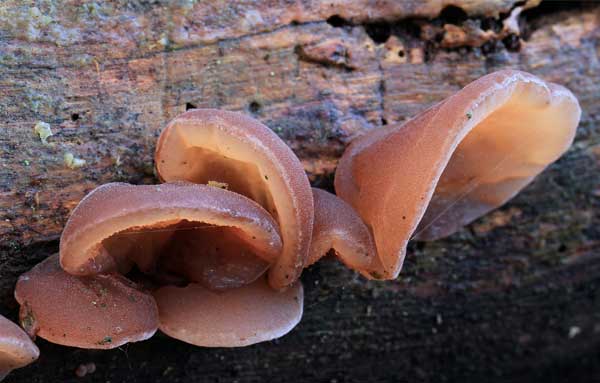
- the fruiting body is almost an exact copy of the auricle. Console-shaped, convex surface with wavy smooth edges. The entire skin of the outer surface is covered with thin and soft hairs, because of this, the fruiting body of the auricularia is velvety to the touch. Skin color is reddish brown. The average size of one "ear" ranges from 4 to 10 cm in diameter;
- the spore-bearing inner surface of the fruiting body is usually directed downward, smooth to the touch, grayish, covered with wrinkles and veins;
- the leg is not pronounced. This part of the fruiting body fits snugly against the bark of the tree;
- the flesh is thin, almost translucent, soft, but firm, gelatinous. When dry, it becomes quite firm and smaller in size. In old mushrooms, it is dense and wrinkled;
- spores are white, elliptical.
Distribution and fruiting season
Auricularia auricularis is a parasite that lives on dead or dying deciduous trees, usually growing on the trunks or branches of the plant. Favorite tree species are elderberry, maple, alder, oak. Usually it grows in small groups, but there are also single representatives.

Auricularia usually lives in moist and warm mixed, deciduous forests of the temperate climatic zone of Eurasia, found in North America. Fruiting from early spring to late autumn.
Primary processing and preparation
Auricularia is a mushroom little known in Russian cuisine, but often used for cooking in the Far East.It is especially famous in China and is even included in the "specialty" dish of the Celestial Empire - "Black Mushroom". Salads are also prepared from auricularia. It can often be found dried on store shelves.
Before using in cooking, the dry fruiting bodies of this mushroom must be soaked - due to this, it acquires a lighter color and increases in size. It is usually consumed boiled.
Useful and medicinal properties
Auricularia auricular is a valuable food product. It contains many vitamins and minerals (such as magnesium, silicon, potassium and others), carbohydrates, proteins and other nutrients.
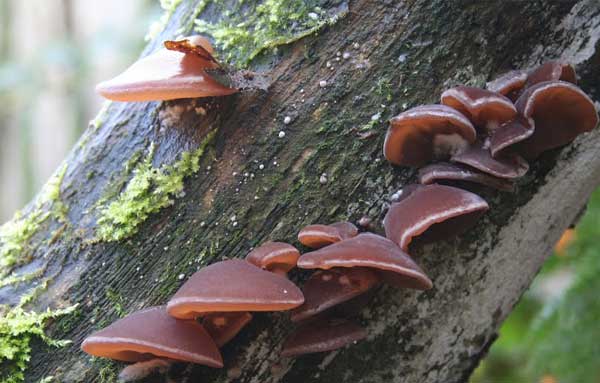
This mushroom has been used in Chinese folk as well as traditional medicine for centuries. Auricularia, akin to activated charcoal, is capable of absorbing all toxins in case of poisoning, copes well with allergies, helps to improve the functioning of the digestive tract. It has proven itself well as a means for improving the composition of blood after chemotherapy, has a beneficial effect on the entire cardiovascular system, is especially useful in ischemic disease, hypertension, thrombus formation and other diseases associated with blood clotting disorders.
Auricularia is an excellent assistant in the fight against neoplasms, it is used in dietetics, normalizes metabolism, has an anti-inflammatory effect and is able to stop blood.
Contraindications
But, no matter how wonderful auricularia would be, it also has contraindications. This mushroom is not recommended for pregnant or lactating women, young children under the age of 5 years. Depending on the characteristics of each organism and the state of health, a person may also have an intolerance to the substances that make up this gift of nature.
Auricularia is a mushroom that can really be called one of the most interesting creations of nature. It not only has a unique look, but also has a lot of useful properties. Fortunately, now it is available not only to residents of warm regions, but also to anyone - auricularia can be purchased in stores.
Use of auricular auricular in medicine.
These mushrooms are widely used in folk and traditional medicine. Auricularia auricular acts like activated charcoal in case of poisoning. Judah's ear is recommended after radiation and chemotherapy, as it improves blood composition. In addition, auricularia improves the digestive processes in diseases of the intestines and stomach. These mushrooms show good results in case of allergic reactions. They are also used as additives to improve metabolism and reduce body weight.
In addition, auricular auricular has a therapeutic effect in case of heart diseases and problems with the vascular system. It has a beneficial effect on blood clotting, therefore, reduces the risk of blood clots. Also, auricular auricular helps in the presence of various tumors, not only benign, but also malignant. It has a hemostatic, anti-inflammatory and analgesic effect.
Contraindications for the use of auricular auricular.
Like any drugs, auricular auricular, has certain contraindications for use. It is not recommended to start treatment during pregnancy and lactation. Also, you should not give these mushrooms to children under 10 years old. In certain cases, individual intolerance may be observed.
The composition of the auricular auricular.
Auricularia auricular has a high nutritional value. Its pulp is rich in protein, carbohydrates, vitamins, macronutrients and trace elements. They are especially rich in vitamins B. Also, the composition includes magnesium, calcium, silicon, potassium and other elements.
Use of auricular auricular in medicine.
These mushrooms are widely used in folk and traditional medicine. Auricularia auricular acts like activated charcoal in case of poisoning.Judah's ear is recommended after radiation and chemotherapy, as it improves blood composition. In addition, auricularia improves the digestive processes in diseases of the intestines and stomach. These mushrooms show good results in case of allergic reactions. They are also used as additives to improve metabolism and reduce body weight.

In addition, auricular auricular has a therapeutic effect in case of heart diseases and problems with the vascular system. It has a beneficial effect on blood clotting, therefore, reduces the risk of blood clots. Also, auricular auricular helps in the presence of various tumors, not only benign, but also malignant. It has a hemostatic, anti-inflammatory and analgesic effect.
Contraindications for the use of auricular auricular.
Like any drugs, auricular auricular, has certain contraindications for use. It is not recommended to start treatment during pregnancy and lactation. Also, you should not give these mushrooms to children under 10 years old. In certain cases, individual intolerance may be observed.

The composition of the auricular auricular.
Auricularia auricular has a high nutritional value. Its pulp is rich in protein, carbohydrates, vitamins, macronutrients and trace elements. They are especially rich in vitamins B. Also, the composition includes magnesium, calcium, silicon, potassium and other elements.
Dense hairy auricularia: how to recognize the "tree ear"
The color of this tree inhabitant is dark olive or brown on the outside of the cap. Inside, it is gray-purple or pinkish-gray. The upper part of the cap has a glossy sheen, while the bottom is covered with a thick layer of hairs. The mushroom is large - adult specimens reach 14-18 cm in diameter, the height of the cap is up to 10 cm, and its thickness is only a couple of millimeters. The stalk often either grows very small and almost invisible, or is absent altogether. Visually, the mushroom has a resemblance to the human ear, for which it received the "eared" name among the people.
The smell is mild mushroom, and the consistency of the mushroom pulp resembles cartilage, but it has a softer, gelatinous structure. Auricularia tolerates drought well - at this time it simply shrivels and shrinks, but after the first rain it again takes on its original shape.
Description of thick hairy auricularia
Outwardly, this gray-brown mushroom looks like a human ear. The diameter of the cap reaches 13-15 centimeters, and the height of the mushroom is 9-10 centimeters. The fruiting body of the fungus is formed by a large number of intertwined threads. The color of the fruit bodies is gray-brown with an olive-yellow tint, and over time the color turns gray. The mushroom is covered with hairs, so it looks like it is plush. Since the fruiting body of the densely hairy auricularia is strong, it belongs to macromycetes.
Funnel-shaped hat. The edges of the cap are wavy, slightly lighter than the rest of the mushroom. The leg is rudimentary, often not pronounced at all, it is so small that it is invisible. The color of the leg is the same as that of the cap.
The pulp is cartilaginous, gelatinous. The color of the pulp is brown, but when dried it turns black. During dry weather, the pulp shrinks, and when it rains, it can completely restore its structure. Spores are white.
Places of growth of auricularia densely hairy
Auricularia grow densely hairy in deciduous forests. These mushrooms grow on tree trunks, that is, they are xylotrophs, which means that they feed and exist for four trees. It is from the trees of the auricularia that the densely haired obtain all the trace elements necessary for life. They settle on the bark, completely growing into it. For this, mushrooms choose old or dead trees. They are found in forests and parks.
These mushrooms bear fruit from June to October.Best of all, thick-haired auriculariae feel in humid and warm weather.
Reproduction of thick-haired auricularia
They retain the ability to grow for 10 years. Fungi spread to new places due to the release of a huge number of spores carried by the wind. When the spores germinate, hyphae are formed - the finest branching filaments. The fruiting body of the fungus is later formed from these filaments. Mushrooms fully develop in 2-3 months, and they can bear fruit for 5 or more years.
Useful properties and possible harm
The calorie content of muer per 100 g is 30 kcal. In its chemical composition:
- 4.8 proteins;
- 2.4 carbohydrates;
- 6 g of ash;
- 13 g of water;
- no fat.
Dishes made from these mushrooms are said to be healthy and have medicinal properties.
The increased proportion of protein and calcium makes it a full-fledged meat substitute in terms of nutritional value, and in terms of the amount of phosphorus it contains, it is not inferior to fish. Vitamins from group B, ascorbic acid, D, calcium, iodine, iron, potassium, enzymes and amino acids are also present in large doses.
In chemical composition, it has common characteristics with the porcini mushroom: fiber and chitin are included in a large volume, acting as neutralizers of toxins and participating in digestive processes.
Irina Selyutina (Biologist):
During the research, the ability of the fungus to anticoagulation was revealed, comparable to the action of heparin.
- Anticoagulation - reducing blood clotting with certain medications.
- Heparin is an anticoagulant that prevents blood clotting, discovered in 1916.
The fungus is not toxic. In nature, it does not have poisonous twins, it cannot be confused with other inedible woody representatives. The use of muer should be limited to people with diseases of the liver, digestive organs, increased secretion of the thyroid gland, as well as those who are prone to allergic reactions in the form of eczema and dermatitis. Contraindicated for children under 14 years of age.
Useful properties of the product, use in traditional medicine
The most popular subspecies for medicinal purposes is auricular auricular. Young specimens are used fresh for food, various dishes are prepared with them. For the winter, the mushrooms are dried, and in the future, tincture or powder can be made from drying. If you pour hot water over dried mushrooms, after 10 minutes they will return to their original form.
The absorbing property of dried mushrooms is known, therefore they are recommended for use in case of food poisoning. Poliosis in the composition of the product has an immunostimulating effect on the body, helps dissolve stones in the gallbladder and kidneys. In addition, the snake slows down the absorption of fats and carbohydrates by the body, therefore nutritionists recommend that people with excess weight be introduced into the diet of Judah's ear.
Substances contained in the auricularia prevent the formation of blood clots, regulate the number of platelets in the blood.
Mushrooms have pronounced anti-inflammatory and antibacterial properties, as well as antiulcer and antitumor effects. Their chemical composition helps to normalize blood sugar and cholesterol levels. Judas ear is also known for its properties of removing radioactive elements from the human body; it is recommended to use it to combat the effects of radiation exposure.
Also, the product has antiallergenic effect, therefore it is used to treat allergies of various origins.
Already in the 16th century, in the medical books of that time, it was written about the use of a tincture of the mushroom in milk or beer, which was used to treat sore throat and inflammatory diseases of the mucous membrane of the eyes. Research, more thorough and accurate with each century, has revealed even more useful secrets of the Jewish ear today, so now it is highly valued by representatives of medicine.In Asian countries, it is specially grown for medicinal use.
Close View
Auricularia Densely haired Auricularia Polytricha

Auricularia Ukhovidnaya - a delicate oriental delicacy
A close relative of our heroine, from the same clan and family. It is widely distributed in Asian countries, where it is also considered a valuable delicacy, and is actively grown artificially on wood, or a substrate of sawdust, rice husks and cotton peels. The mushroom has a very pleasant consistency and a mild taste.
Outwardly, this species is very similar to our heroine, but it is larger - fruiting bodies can reach up to 15 cm, is lighter in color, and are distinguished by the greater length of hairs on the outer surface.
Lives Auricularia Densely hairy on tree trunks in deciduous forests of tropical regions of the world. In Russia, it is found in the Primorsky and Khabarovsk Territories, and on the island of Sakhalin.
Auricularia Ukhovidnaya is one of those amusing creations of nature, which is no less pleasant to look at than to eat. We wish you to meet her black and red curled ears during a quiet hunt, and get acquainted with the delicious taste of this wonderful woody mushroom.
Description
Auricularia auricula-judae is an edible mushroom that belongs to the Auriculariaceae family. The Chinese call him "hei mu er", the Japanese call him "kikurage". And if the first version is translated as “black tree ear”, then from the Japanese language the name can be literally translated as “tree jellyfish”. Sometimes he is also called a dog's or devil's ear. But the most common name for this mushroom is Judas ear, the emergence of which is closely related to the well-known biblical legend of Judas. The hero of the legend at one time hanged himself on an elder, and it is this tree that Auricularia loves most of all.

- the fruiting body is almost an exact copy of the auricle. Console-shaped, convex surface with wavy smooth edges. The entire skin of the outer surface is covered with thin and soft hairs, because of this, the fruiting body of the auricularia is velvety to the touch. Skin color is reddish brown. The average size of one "ear" ranges from 4 to 10 cm in diameter;
- the spore-bearing inner surface of the fruiting body is usually directed downward, smooth to the touch, grayish, covered with wrinkles and veins;
- the leg is not pronounced. This part of the fruiting body fits snugly against the bark of the tree;
- the flesh is thin, almost translucent, soft, but firm, gelatinous. When dry, it becomes quite firm and smaller in size. In old mushrooms, it is dense and wrinkled;
- spores are white, elliptical.
Taste and color
The taste is not pronounced. Various sources of filmy auricularia are recognized as inedible or edible, but with low nutritional quality. The stage of development of the fruiting body, as well as the state and type of wood on which the fungus grows, affect the color of the auricularia, ranging from light gray, olive to gray-brown with a purple tint, almost black. The color is concentric, has clear zoning with alternating dark and light stripes. The surface texture is velvety, soft to the touch. The edges of the cap are whitish, folded. Sometimes, due to settling algae, a greenish coating appears on the mushroom. The underside of the spore-bearing side of young auricularia is white and smooth, with time it becomes reddish-brown, wrinkled, with veins.
Auricularia sinuous or membranous: features of appearance
Unlike the ear-shaped and densely haired, which in their shape are very reminiscent of a shell, the membranous subspecies is similar to a disc. The semicircular cap straightens over time, forming lamellar forms. In width they reach 8-12 cm, and in thickness - no more than 4-5 millimeters.
There are concentric grooves on the outside of the cap. Between them there are even parts of a dark brown color. The general color of the mushroom is light gray, beige, brown.There are specimens with a greenish bloom - the fault is moss or algae. The underside of the cap has a wrinkled, sinewy surface and a brownish-purple coloration.
The soft, elastic and tasteless pulp, even without particularly useful properties, did not gain much popularity either among mushroom pickers or doctors.
Culinary Significance
In Asian, especially Chinese, cuisine, Auricularia Ukhovidnaya is a valuable delicacy, an essential ingredient in the Chinese Black Mushroom soup.
Auricularia is successfully boiled and fried, used in salads and pickled with hot spices. Residents of southern Russia boil this mushroom, cut it into strips, mix it with Korean spices and get a branded snack.
Auricularia is very successful in drying. Dried fruit bodies lose a lot in volume, but they are very well stored, and after soaking they restore their structure.
In some sources, this mushroom is positioned as conditionally edible, however, it is known that its pulp is quite suitable for eating raw, therefore it is quite fair to class it as a full-fledged edible mushroom.
English classification of auricles
Historically, the greatest distribution and love were received by auricles in Great Britain. Therefore, despite the fact that now abroad not only the British are engaged in the selection of ear primroses, for the classification of foreign varieties of auricles, it is the English classification of these promising primroses for breeders that is traditionally used.
According to the English classification, there are 4 types of auricles:
1. Show (show "exhibition") auricles - the most unusual of the four types. Their flowers, abundantly covered with a white powdery coating ("farina"), sometimes almost entirely, have all known colors and shades: many two- and three-color, as well as with striped flowers, playing with the overflow of several colors at once. The British themselves grow them only in pots under cover, so that the precipitation does not damage the unique powdery dusting, which turns each flower into an elegant souvenir.
Show-arikuls, in turn, are divided into groups:
- Self (petals of the same color);
- Edged (edged - very abundantly covered with farina), sometimes they are still subdivided into auricles with gray, white and green edges;
- Fancy (a combination of black, red, yellow and other colors with a green or gray edge);
- Striped (striped petals with any color combinations).
Perhaps due to the fact that the whole line was historically cultivated mainly in conservatories, unfortunately, the group of show auricles is most unstable in the open field. Moreover, the main problem is not even frost, but precipitation, which not only spoils the graceful appearance of auricles, but also causes decay and death of plants.
All these groups of show-auricles in practice turned out to be unsuitable even for the conditions of central Russia. According to the available information, almost all white and gray-bordered varieties of ear primroses fall out; unstable and many monochromatic (Self). The most surviving auricles are Striped and green-edged auricles. But attempts to introduce them continue.
But the other three types of auriculums have shown themselves to be quite stable in our conditions, with the exception of some more capricious varieties.
2. Alpin ("alpine") auricles... Neat, rounded flowers with a yellow (Gold centered) or light (Light centered) center, followed by a darker zone on the petals, and then a contrasting light edge. Thanks to this, the flowers look tricolor. Many alpine auricles are good not only in color, but also in size. Any colors except green. Auricular primroses with a yellow center tend to be yellow-red-brown in color.
3. Borders ("border" - that is, garden) auricles... They are considered the progenitors of all varieties of ear primroses. The British call them "true auricles".Now this group usually includes plants with large wavy petals, often monochromatic, quite viable, which follows from the name of the group and its origin.
4.Double (terry) auricles... From semi-double to densely double auricles of all possible colors; not all varieties, however, have a stable strong doubleness. Oddly enough, they are no more capricious than the other two groups, with the exception of certain varieties.
Growing auricularia at home
Despite not the highest popularity of the ear-shaped mushroom in our latitudes, there are true fans of its healing properties, who, due to the inaccessibility of the mushroom, are trying to grow it on their own. So, for the formation of mycelium, it is enough to make several cuts on any tree available on the site and sow mycelium on a fresh cut.
The germination process usually takes about 3 months at an average temperature of 20 degrees Celsius, after which the trunks or logs are sheltered from direct sunlight.
Advice! Warm humid conditions are considered the most favorable for fruiting, and experienced mushroom pickers recommend harvesting already with the first appearance of the spore-bearing layer.
On average, the fruiting cycle from one mycelium is about 6 years, after which a new mycelium has to be sown. The fruits themselves are dried and used to prepare various healing infusions and decoctions.
Healing properties of thick hairy auricularia
Due to the presence of many vitamins, minerals, proteins and ballast matter, the mushroom has the following healing properties:
- Stops inflammation of the mucous membranes.
- Normalizes blood cholesterol levels.
- Increases immunity and general tone of the body.
- Delays aging and prevents the development of cancer cells by neutralizing free radicals.
- Normalizes blood pressure in hypertension.
- Relieves inflammation of the tonsils with tonsillitis, laryngitis, etc.
- It thins the blood, which is useful for vasoconstriction, blood flow disorders and for the prevention of heart attacks, strokes, atherosclerosis and blood clots. Residents of East Asia who regularly use auricularia are much less likely to get sick with such ailments.
- Helps in the treatment of hemorrhoids.
- It is used in the treatment of depression, phobias, and helps with other mental disorders.
- Eliminates conjunctivitis and other inflammatory processes of the eyes.
- Relieves migraine headaches.
- Helps with obliterating endarteritis (showcase disease), relieving pain and restoring oxygen supply.
- Dissolves and removes stones with urolithiasis and gallstone disease.
In addition, Auricularia thick-haired helps to lose weight - due to the content of plant colloids that prevent the deposition of fat and increase cholesterol levels. The use of this mushroom is contraindicated for pregnant and lactating women, as well as for babies under the age of five.

